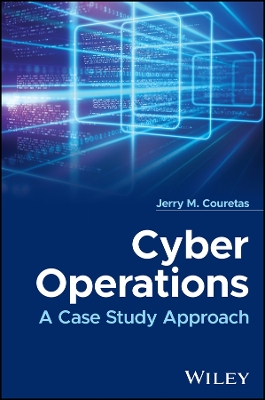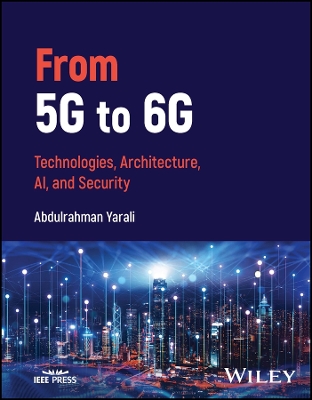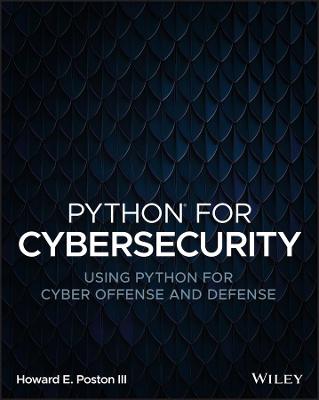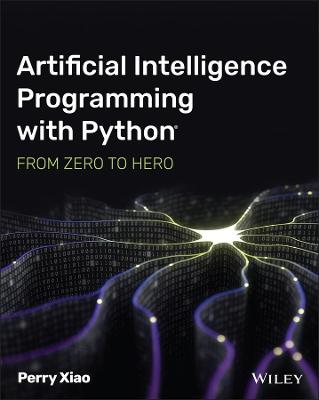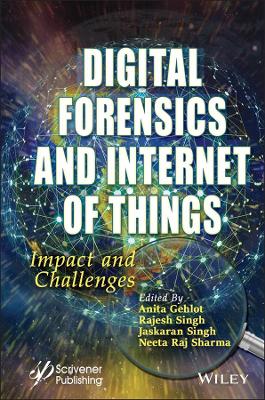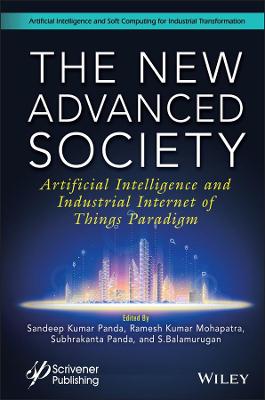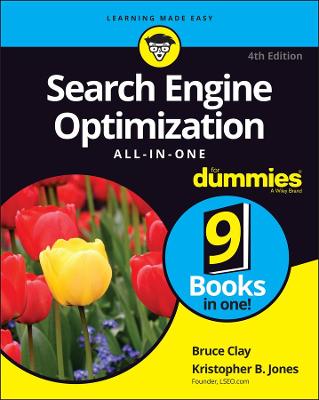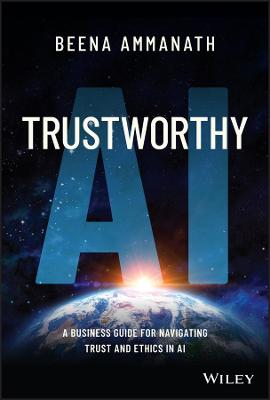Artificial Intelligence for Renewable Energy Systems
 -15%
portes grátis
-15%
portes grátis
Artificial Intelligence for Renewable Energy Systems
Hiran, Kamal Kant; Dhiman, Harsh S.; Vyas, Ajay Kumar; Balamurugan, S.
John Wiley & Sons Inc
03/2022
272
Dura
Inglês
9781119761693
15 a 20 dias
467
1 Analysis of Six-Phase Grid Connected Synchronous Generator in Wind Power Generation 1
Arif Iqbal and Girish Kumar Singh
1.1 Introduction 2
1.2 Analytical Modeling of Six-Phase Synchronous Machine 4
1.2.1 Voltage Equation 5
1.2.2 Equations of Flux Linkage Per Second 5
1.3 Linearization of Machine Equations for Stability Analysis 10
1.4 Dynamic Performance Results 12
1.5 Stability Analysis Results 15
1.5.1 Parametric Variation of Stator 16
1.5.2 Parametric Variation of Field Circuit 19
1.5.3 Parametric Variation of Damper Winding, Kd 22
1.5.4 Parametric Variation of Damper Winding, Kq 24
1.5.5 Magnetizing Reactance Variation Along q-axis 26
1.5.6 Variation in Load 28
1.6 Conclusions 29
References 30
Appendix 31
Symbols Meaning 32
2 Artificial Intelligence as a Tool for Conservation and Efficient Utilization of Renewable Resource 37
Vinay N., Ajay Sudhir Bale, Subhashish Tiwari and Baby Chithra R.
2.1 Introduction 38
2.2 AI in Water Energy 39
2.2.1 Prediction of Groundwater Level 39
2.2.2 Rainfall Modeling 46
2.3 AI in Solar Energy 47
2.3.1 Solar Power Forecasting 47
2.4 AI in Wind Energy 53
2.4.1 Wind Monitoring 53
2.4.2 Wind Forecasting 54
2.5 AI in Geothermal Energy 55
2.6 Conclusion 60
References 61
3 Artificial Intelligence-Based Energy-Efficient Clustering and Routing in IoT-Assisted Wireless Sensor Network 79
Nitesh Chouhan
3.1 Introduction 80
3.2 Related Study 81
3.3 Clustering in WSN 84
3.4 Research Methodology 85
3.4.1 Creating Wireless Sensor-Based IoT Environment 85
3.4.2 Clustering Approach 86
3.4.3 AI-Based Energy-Aware Routing Protocol 87
3.5 Conclusion 89
References 89
4 Artificial Intelligence for Modeling and Optimization of the Biogas Production 93
Narendra Khatri and Kamal Kishore Khatri
4.1 Introduction 93
4.2 Artificial Neural Network 96
4.2.1 ANN Architecture 96
4.2.2 Training Algorithms 98
4.2.3 Performance Parameters for Analysis of the ANN Model 98
4.2.4 Application of ANN for Biogas Production Modeling 99
4.3 Evolutionary Algorithms 103
4.3.1 Genetic Algorithm 103
4.3.2 Ant Colony Optimization 104
4.3.3 Particle Swarm Optimization 106
4.3.4 Application of Hybrid Models (ANN and Evolutionary Algorithms) for Biogas Production Modeling 106
4.4 Conclusion 107
References 111
5 Battery State-of-Charge Modeling for Solar PV Array Using Polynomial Regression 115
Siddhi Vinayak Pandey, Jeet Patel and Harsh S. Dhiman
5.1 Introduction 115
5.2 Dynamic Battery Modeling 119
5.2.1 Proposed Methodology 120
5.3 Results and Discussion 122
5.4 Conclusion 126
References 127
6 Deep Learning Algorithms for Wind Forecasting: An Overview 129
M. Lydia and G. Edwin Prem Kumar
Nomenclature 129
6.1 Introduction 131
6.2 Models for Wind Forecasting 133
6.2.1 Persistence Model 133
6.2.2 Point vs. Probabilistic Forecasting 133
6.2.3 Multi-Objective Forecasting 134
6.2.4 Wind Power Ramp Forecasting 134
6.2.5 Interval Forecasting 134
6.2.6 Multi-Step Forecasting 134
6.3 The Deep Learning Paradigm 135
6.3.1 Batch Learning 136
6.3.2 Sequential Learning 136
6.3.3 Incremental Learning 136
6.3.4 Scene Learning 136
6.3.5 Transfer Learning 136
6.3.6 Neural Structural Learning 136
6.3.7 Multi-Task Learning 137
6.4 Deep Learning Approaches for Wind Forecasting 137
6.4.1 Deep Neural Network 137
6.4.2 Long Short-Term Memory 138
6.4.3 Extreme Learning Machine 138
6.4.4 Gated Recurrent Units 139
6.4.5 Autoencoders 139
6.4.6 Ensemble Models 139
6.4.7 Other Miscellaneous Models 139
6.5 Research Challenges 139
6.6 Conclusion 141
References 142
7 Deep Feature Selection for Wind Forecasting-I 147
C. Ramakrishnan, S. Sridhar, Kusumika Krori Dutta, R. Karthick and C. Janamejaya
7.1 Introduction 148
7.2 Wind Forecasting System Overview 152
7.2.1 Classification of Wind Forecasting 153
7.2.2 Wind Forecasting Methods 153
7.2.2.1 Physical Method 154
7.2.2.2 Statistical Method 154
7.2.2.3 Hybrid Method 155
7.2.3 Prediction Frameworks 155
7.2.3.1 Pre-Processing of Data 155
7.2.3.2 Data Feature Analysis 156
7.2.3.3 Model Formulation 156
7.2.3.4 Optimization of Model Structure 156
7.2.3.5 Performance Evaluation of Model 157
7.2.3.6 Techniques Based on Methods of Forecasting 157
7.3 Current Forecasting and Prediction Methods 158
7.3.1 Time Series Method (TSM) 159
7.3.2 Persistence Method (PM) 159
7.3.3 Artificial Intelligence Method 160
7.3.4 Wavelet Neural Network 161
7.3.5 Adaptive Neuro-Fuzzy Inference System (ANFIS) 162
7.3.6 ANFIS Architecture 163
7.3.7 Support Vector Machine (SVM) 165
7.3.8 Ensemble Forecasting 166
7.4 Deep Learning-Based Wind Forecasting 166
7.4.1 Reducing Dimensionality 168
7.4.2 Deep Learning Techniques and Their Architectures 169
7.4.3 Unsupervised Pre-Trained Networks 169
7.4.4 Convolutional Neural Networks 170
7.4.5 Recurrent Neural Networks 170
7.4.6 Analysis of Support Vector Machine and Decision Tree Analysis (With Computation Time) 170
7.4.7 Tree-Based Techniques 172
7.5 Case Study 173
References 176
8 Deep Feature Selection for Wind Forecasting-II 181
S. Oswalt Manoj, J.P. Ananth, Balan Dhanka and Maharaja Kamatchi
8.1 Introduction 182
8.1.1 Contributions of the Work 184
8.2 Literature Review 185
8.3 Long Short-Term Memory Networks 186
8.4 Gated Recurrent Unit 190
8.5 Bidirectional Long Short-Term Memory Networks 194
8.6 Results and Discussion 196
8.7 Conclusion and Future Work 197
References 198
9 Data Falsification Detection in AMI: A Secure Perspective Analysis 201
Vineeth V.V. and S. Sophia
9.1 Introduction 201
9.2 Advanced Metering Infrastructure 202
9.3 AMI Attack Scenario 204
9.4 Data Falsification Attacks 205
9.5 Data Falsification Detection 206
9.6 Conclusion 207
References 208
10 Forecasting of Electricity Consumption for G20 Members Using Various Machine Learning Techniques 211
Jaymin Suhagiya, Deep Raval, Siddhi Vinayak Pandey, Jeet Patel, Ayushi Gupta and Akshay Srivastava
10.1 Introduction 211
10.1.1 Why Electricity Consumption Forecasting Is Required? 212
10.1.2 History and Advancement in Forecasting of Electricity Consumption 212
10.1.3 Recurrent Neural Networks 213
10.1.3.1 Long Short-Term Memory 214
10.1.3.2 Gated Recurrent Unit 214
10.1.3.3 Convolutional LSTM 215
10.1.3.4 Bidirectional Recurrent Neural Networks 216
10.1.4 Other Regression Techniques 216
10.2 Dataset Preparation 217
10.3 Results and Discussions 218
10.4 Conclusion 225
Acknowledgement 225
References 225
11 Use of Artificial Intelligence (AI) in the Optimization of Production of Biodiesel Energy 229
Manvinder Singh Pahwa, Manish Dadhich, Jaskaran Singh Saini and Dinesh Kumar Saini
11.1 Introduction 230
11.2 Indian Perspective of Renewable Biofuels 230
11.3 Opportunities 232
11.4 Relevance of Biodiesel in India Context 233
11.5 Proposed Model 234
11.6 Conclusion 236
References 237
Index 239
1 Analysis of Six-Phase Grid Connected Synchronous Generator in Wind Power Generation 1
Arif Iqbal and Girish Kumar Singh
1.1 Introduction 2
1.2 Analytical Modeling of Six-Phase Synchronous Machine 4
1.2.1 Voltage Equation 5
1.2.2 Equations of Flux Linkage Per Second 5
1.3 Linearization of Machine Equations for Stability Analysis 10
1.4 Dynamic Performance Results 12
1.5 Stability Analysis Results 15
1.5.1 Parametric Variation of Stator 16
1.5.2 Parametric Variation of Field Circuit 19
1.5.3 Parametric Variation of Damper Winding, Kd 22
1.5.4 Parametric Variation of Damper Winding, Kq 24
1.5.5 Magnetizing Reactance Variation Along q-axis 26
1.5.6 Variation in Load 28
1.6 Conclusions 29
References 30
Appendix 31
Symbols Meaning 32
2 Artificial Intelligence as a Tool for Conservation and Efficient Utilization of Renewable Resource 37
Vinay N., Ajay Sudhir Bale, Subhashish Tiwari and Baby Chithra R.
2.1 Introduction 38
2.2 AI in Water Energy 39
2.2.1 Prediction of Groundwater Level 39
2.2.2 Rainfall Modeling 46
2.3 AI in Solar Energy 47
2.3.1 Solar Power Forecasting 47
2.4 AI in Wind Energy 53
2.4.1 Wind Monitoring 53
2.4.2 Wind Forecasting 54
2.5 AI in Geothermal Energy 55
2.6 Conclusion 60
References 61
3 Artificial Intelligence-Based Energy-Efficient Clustering and Routing in IoT-Assisted Wireless Sensor Network 79
Nitesh Chouhan
3.1 Introduction 80
3.2 Related Study 81
3.3 Clustering in WSN 84
3.4 Research Methodology 85
3.4.1 Creating Wireless Sensor-Based IoT Environment 85
3.4.2 Clustering Approach 86
3.4.3 AI-Based Energy-Aware Routing Protocol 87
3.5 Conclusion 89
References 89
4 Artificial Intelligence for Modeling and Optimization of the Biogas Production 93
Narendra Khatri and Kamal Kishore Khatri
4.1 Introduction 93
4.2 Artificial Neural Network 96
4.2.1 ANN Architecture 96
4.2.2 Training Algorithms 98
4.2.3 Performance Parameters for Analysis of the ANN Model 98
4.2.4 Application of ANN for Biogas Production Modeling 99
4.3 Evolutionary Algorithms 103
4.3.1 Genetic Algorithm 103
4.3.2 Ant Colony Optimization 104
4.3.3 Particle Swarm Optimization 106
4.3.4 Application of Hybrid Models (ANN and Evolutionary Algorithms) for Biogas Production Modeling 106
4.4 Conclusion 107
References 111
5 Battery State-of-Charge Modeling for Solar PV Array Using Polynomial Regression 115
Siddhi Vinayak Pandey, Jeet Patel and Harsh S. Dhiman
5.1 Introduction 115
5.2 Dynamic Battery Modeling 119
5.2.1 Proposed Methodology 120
5.3 Results and Discussion 122
5.4 Conclusion 126
References 127
6 Deep Learning Algorithms for Wind Forecasting: An Overview 129
M. Lydia and G. Edwin Prem Kumar
Nomenclature 129
6.1 Introduction 131
6.2 Models for Wind Forecasting 133
6.2.1 Persistence Model 133
6.2.2 Point vs. Probabilistic Forecasting 133
6.2.3 Multi-Objective Forecasting 134
6.2.4 Wind Power Ramp Forecasting 134
6.2.5 Interval Forecasting 134
6.2.6 Multi-Step Forecasting 134
6.3 The Deep Learning Paradigm 135
6.3.1 Batch Learning 136
6.3.2 Sequential Learning 136
6.3.3 Incremental Learning 136
6.3.4 Scene Learning 136
6.3.5 Transfer Learning 136
6.3.6 Neural Structural Learning 136
6.3.7 Multi-Task Learning 137
6.4 Deep Learning Approaches for Wind Forecasting 137
6.4.1 Deep Neural Network 137
6.4.2 Long Short-Term Memory 138
6.4.3 Extreme Learning Machine 138
6.4.4 Gated Recurrent Units 139
6.4.5 Autoencoders 139
6.4.6 Ensemble Models 139
6.4.7 Other Miscellaneous Models 139
6.5 Research Challenges 139
6.6 Conclusion 141
References 142
7 Deep Feature Selection for Wind Forecasting-I 147
C. Ramakrishnan, S. Sridhar, Kusumika Krori Dutta, R. Karthick and C. Janamejaya
7.1 Introduction 148
7.2 Wind Forecasting System Overview 152
7.2.1 Classification of Wind Forecasting 153
7.2.2 Wind Forecasting Methods 153
7.2.2.1 Physical Method 154
7.2.2.2 Statistical Method 154
7.2.2.3 Hybrid Method 155
7.2.3 Prediction Frameworks 155
7.2.3.1 Pre-Processing of Data 155
7.2.3.2 Data Feature Analysis 156
7.2.3.3 Model Formulation 156
7.2.3.4 Optimization of Model Structure 156
7.2.3.5 Performance Evaluation of Model 157
7.2.3.6 Techniques Based on Methods of Forecasting 157
7.3 Current Forecasting and Prediction Methods 158
7.3.1 Time Series Method (TSM) 159
7.3.2 Persistence Method (PM) 159
7.3.3 Artificial Intelligence Method 160
7.3.4 Wavelet Neural Network 161
7.3.5 Adaptive Neuro-Fuzzy Inference System (ANFIS) 162
7.3.6 ANFIS Architecture 163
7.3.7 Support Vector Machine (SVM) 165
7.3.8 Ensemble Forecasting 166
7.4 Deep Learning-Based Wind Forecasting 166
7.4.1 Reducing Dimensionality 168
7.4.2 Deep Learning Techniques and Their Architectures 169
7.4.3 Unsupervised Pre-Trained Networks 169
7.4.4 Convolutional Neural Networks 170
7.4.5 Recurrent Neural Networks 170
7.4.6 Analysis of Support Vector Machine and Decision Tree Analysis (With Computation Time) 170
7.4.7 Tree-Based Techniques 172
7.5 Case Study 173
References 176
8 Deep Feature Selection for Wind Forecasting-II 181
S. Oswalt Manoj, J.P. Ananth, Balan Dhanka and Maharaja Kamatchi
8.1 Introduction 182
8.1.1 Contributions of the Work 184
8.2 Literature Review 185
8.3 Long Short-Term Memory Networks 186
8.4 Gated Recurrent Unit 190
8.5 Bidirectional Long Short-Term Memory Networks 194
8.6 Results and Discussion 196
8.7 Conclusion and Future Work 197
References 198
9 Data Falsification Detection in AMI: A Secure Perspective Analysis 201
Vineeth V.V. and S. Sophia
9.1 Introduction 201
9.2 Advanced Metering Infrastructure 202
9.3 AMI Attack Scenario 204
9.4 Data Falsification Attacks 205
9.5 Data Falsification Detection 206
9.6 Conclusion 207
References 208
10 Forecasting of Electricity Consumption for G20 Members Using Various Machine Learning Techniques 211
Jaymin Suhagiya, Deep Raval, Siddhi Vinayak Pandey, Jeet Patel, Ayushi Gupta and Akshay Srivastava
10.1 Introduction 211
10.1.1 Why Electricity Consumption Forecasting Is Required? 212
10.1.2 History and Advancement in Forecasting of Electricity Consumption 212
10.1.3 Recurrent Neural Networks 213
10.1.3.1 Long Short-Term Memory 214
10.1.3.2 Gated Recurrent Unit 214
10.1.3.3 Convolutional LSTM 215
10.1.3.4 Bidirectional Recurrent Neural Networks 216
10.1.4 Other Regression Techniques 216
10.2 Dataset Preparation 217
10.3 Results and Discussions 218
10.4 Conclusion 225
Acknowledgement 225
References 225
11 Use of Artificial Intelligence (AI) in the Optimization of Production of Biodiesel Energy 229
Manvinder Singh Pahwa, Manish Dadhich, Jaskaran Singh Saini and Dinesh Kumar Saini
11.1 Introduction 230
11.2 Indian Perspective of Renewable Biofuels 230
11.3 Opportunities 232
11.4 Relevance of Biodiesel in India Context 233
11.5 Proposed Model 234
11.6 Conclusion 236
References 237
Index 239

